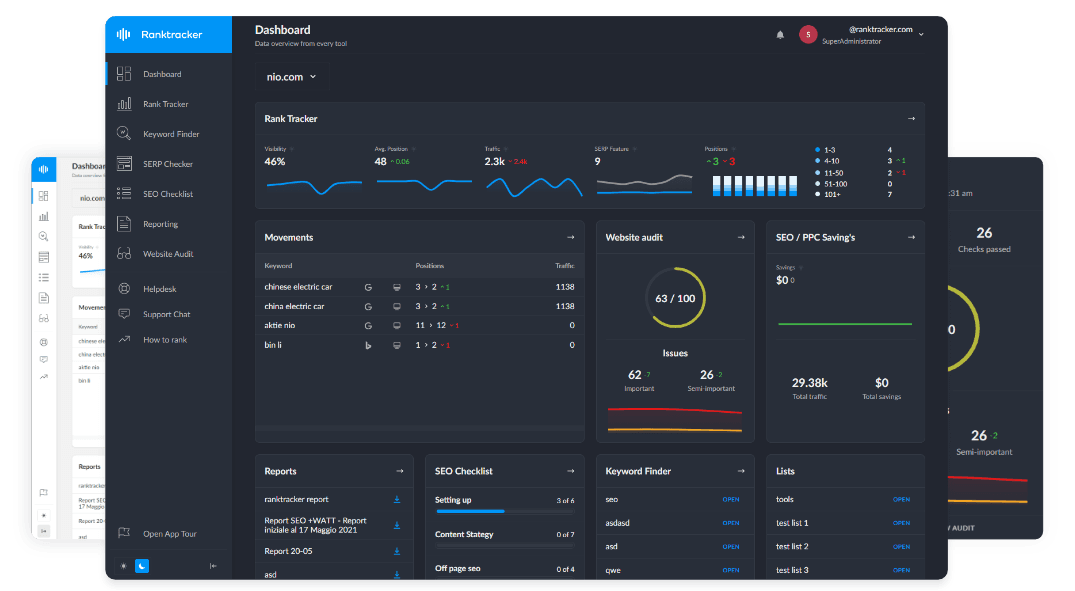Intro
In 2025, if you’re not leveraging video, you’re invisible to a huge chunk of your audience. Video is no longer just “nice to have”—it’s become essential for organic search visibility, audience engagement, and establishing brand authority.
What changed?
-
Google’s search results: Video carousels, video packs, and featured snippets now dominate many high-traffic queries.
-
User behavior: Visitors are more likely to stay on your page and convert after watching a relevant, well-produced video.
-
Content value: Pages with embedded, captioned videos earn more backlinks, shares, and time-on-site (all direct ranking factors).
Stat to know: According to Wikipedia, marketers who use video grow revenue 49% faster than those who don’t.
How Google and Social Platforms Prioritize Video
Google’s algorithm has steadily evolved to reward “rich media”—with video often ranking above text alone, especially for how-to, review, and product queries. Embedding videos that address real search intent can help your site:
-
Appear in “Video” search tabs and carousels
-
Gain enhanced click-through rates with video thumbnails in SERPs
-
Lower bounce rates by keeping users engaged
Tip for Ranktracker readers: Analyze your competitors’ video rankings using the SERP Checker. Identify which queries return video packs—these are opportunities to leapfrog text-only rivals with the right content.
AI, Accessibility, and the Power of Auto Captions
Why Captions are Now Non-Negotiable
Modern video content must be accessible. Captions don’t just help users with hearing loss; they boost engagement for everyone who browses with sound off (think: mobile users, commuters, busy office workers). Many creators now rely on video generation software that includes auto-captioning to make this process seamless and scalable.
SEO bonus: Caption text is crawlable by search engines, giving your video content a text layer that can rank for additional keywords.
Automating the Process: Manual transcription is time-consuming. Smart marketers now use automated tools to streamline this step. For example, an auto caption generator can instantly produce accurate subtitles for your content—improving accessibility, SEO, and user retention in a single move.
Case in Point: A B2B SaaS site implemented auto captions for its product demos and saw session duration increase by 32%, and organic video views double within two quarters.
Mobile Video Editing: Workflows for Modern Marketers
Why Mobile Matters
Social-first platforms (Instagram, TikTok, YouTube Shorts) have changed the pace of content creation. Marketers, small business owners, and creators need to be able to film, edit, and publish video anywhere—not just at a desk.
Key Workflow Upgrades:
-
Shoot: Capture live events, testimonials, and tutorials on your smartphone.
-
Edit on the go: Trim, caption, merge, and add effects before you’re back in the office.
-
Publish fast: Upload directly to social platforms, your website, or marketing emails.
The iOS video editor by Clideo lets you handle every part of this process from your phone, with a user-friendly interface for non-techies and power users alike.
The All-in-One Platform for Effective SEO
Behind every successful business is a strong SEO campaign. But with countless optimization tools and techniques out there to choose from, it can be hard to know where to start. Well, fear no more, cause I've got just the thing to help. Presenting the Ranktracker all-in-one platform for effective SEO
We have finally opened registration to Ranktracker absolutely free!
Create a free accountOr Sign in using your credentials
Internal tip: For content teams using Ranktracker, tracking how quickly you can respond to trends or user feedback with new video content is a competitive advantage.
Building a Video-Driven Content Strategy
Aligning Video With SEO Goals
A scattershot approach doesn’t work. Successful brands plan video as an integral part of their content clusters and funnel stages. Here’s how:
-
Map video topics to keyword opportunities: Use Ranktracker’s Keyword Finder to spot where users are searching for “how-to” or product demo content.
-
Optimize every upload: Include transcripts, captions, and schema markup for better discoverability.
-
Cross-link between video and blog content: Example: A written guide to “YouTube SEO” can embed a tutorial video, then direct viewers to a downloadable checklist.
Bullet points to remember:
-
Use auto captions for every video, for accessibility and SEO.
-
Keep mobile editing tools handy to capitalize on trends.
-
Analyze which video topics drive the most organic traffic, then double down.
Choosing the Best Video Tools for SEO Impact
Not all video tools are created equal. When selecting your stack, prioritize solutions that are:
-
Easy to use: No steep learning curve.
-
Multi-platform: Support web, desktop, and mobile.
-
Automated where it counts: Auto captions, smart editing, one-click exports.
-
Cloud-based: Access your projects from anywhere and collaborate with your team in real time.
Pro Workflow: Start with brainstorming and keyword mapping in Ranktracker. Script and storyboard with your team. Capture and edit your footage using an app like Clideo’s iOS editor for speed and flexibility. Generate captions with an auto caption tool. Optimize every video for your chosen keywords, and track performance.
Link to a reputable source: For more on optimizing video for search, see Google’s official video SEO documentation.
Conclusion: Video, SEO, and Next-Level Growth
The marketers who win in 2025 aren’t just making great videos—they’re making videos that rank, convert, and build real authority. By adopting a workflow that embraces mobile editing, automated captions, and SEO-centric strategy, you position your brand for long-term organic growth.
Remember:
-
Treat video production as a pillar of your content strategy, not an afterthought.
-
Use tools that fit your workflow and help you move fast.
-
Always keep an eye on what’s ranking—then make something better.

